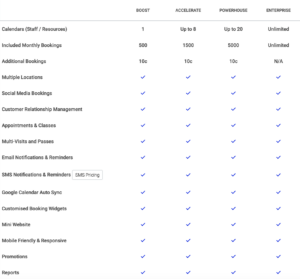The success of your small business will depend largely on the number of customers you attract and how well you serve them. As such, it’s important to have a marketing plan in place to help you increase your exposure and create more sales opportunities. This step-by-step guide will walk you through everything you need to know about creating a marketing plan that works!
What is a Marketing Plan?
If you’re starting a small business, you’ve probably got some very big goals, or maybe you have an existing business and your goal is as simple as returning to pre-COVID revenue. Either way, developing a marketing plan will help you define your ideal customer and determine which marketing strategies will be most effective in reaching them. A successful marketing plan is vital to ensuring that your business reaches its full potential.
What should your Marketing Plan include?
Most small business owners don’t have marketing departments, so it’s up to you to lead your company’s marketing efforts. As such, you must put together an actionable plan that details how you will market your product or service. The best way to build out a marketing plan is to write down answers to questions about your current sales strategy.
Ask yourself:
- Where is your main source(s) of revenue coming from now? (if you don’t know the answer to this question – then start with finding that answer!)
- Based on your findings from point 1, what does your ideal customer look like? What sort of channels are they likely to use to find your business? (word of mouth, search engines, review sites, social media etc.)
TIP: be as detailed as you can! - Who are your main competitors? What are they doing well that perhaps you can learn from?
- What compelling reasons are there for your ideal customer to choose your product/service over your competitor’s? (this is also known as your USP)
- What outbound marketing strategies would reach your audience? What are you willing to invest in outbound? (social media advertising is often a good starting point, low cost of entry and user friendly management tools) Old fashioned emails and phone calls are still an excellent strategy and generally the cost is $0
- Now you’ve maximised your outbound strategy, how can you do the same for inbound? Read on to find out.
What are some ways you can increase inbound leads and rely less on your own outbound marketing?
There are two main ways you can find new customers: you can either go out and find them, or they can come to you. The former is what’s known as outbound marketing, while the latter is called inbound marketing. By focusing on inbound leads instead of outbound marketing, small businesses can gain more control over their sales efforts and reduce costs at the same time. One of the most effective inbound strategies is to look at additional channels for new business, such as review sites, online marketplaces and social media groups. While some channels will incur a small cost or possibly a commission on sales, you are paying for results in most cases so the expense is easily justified.
For more ideas about creating your own successful inbound lead generation plan, follow us on LinkedIn for more helpful articles.



